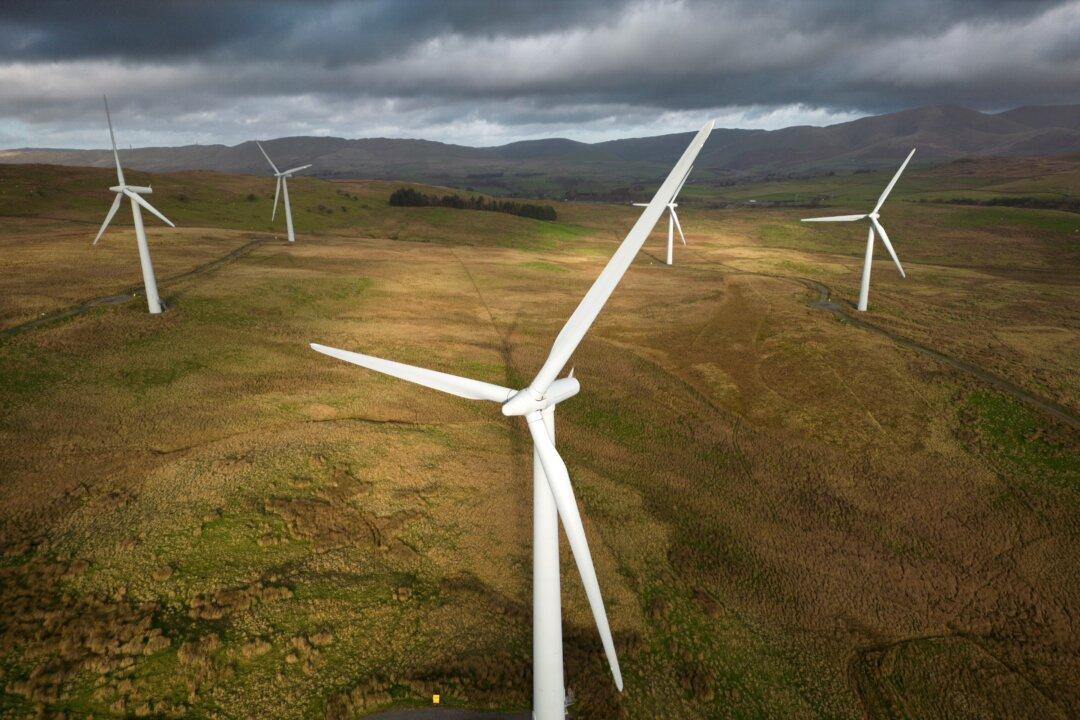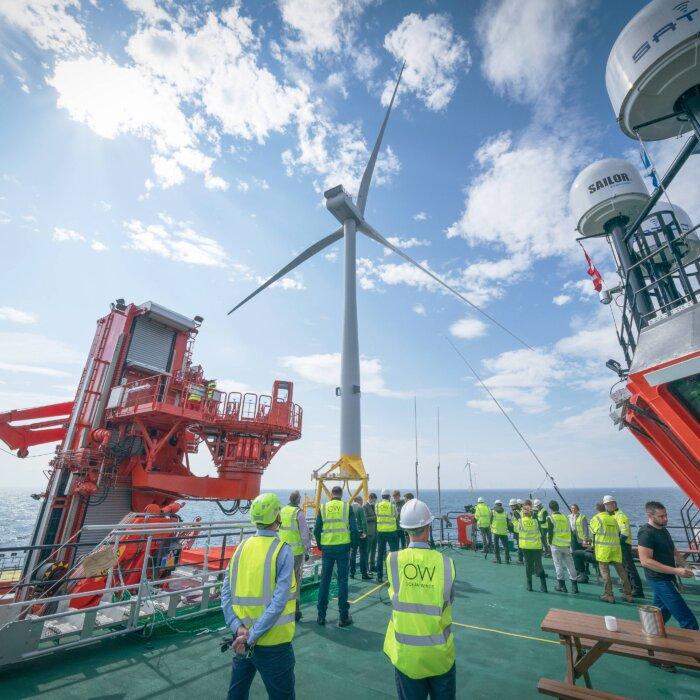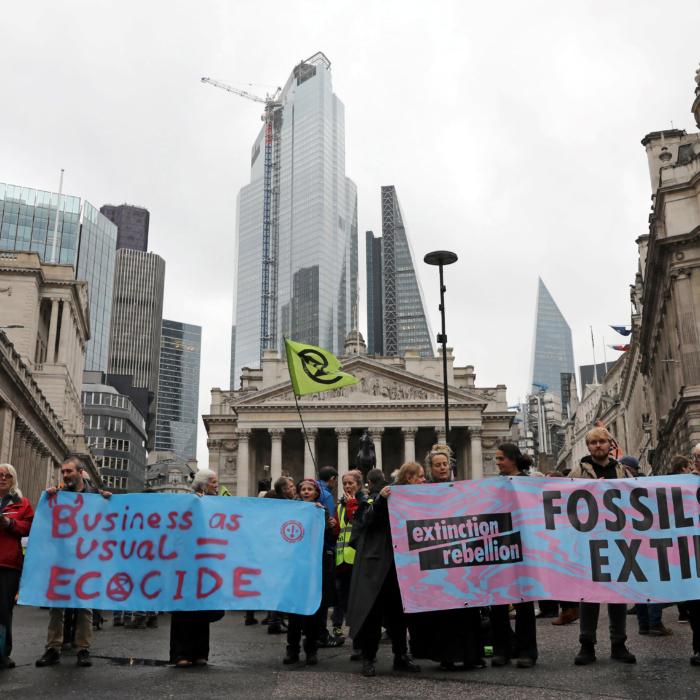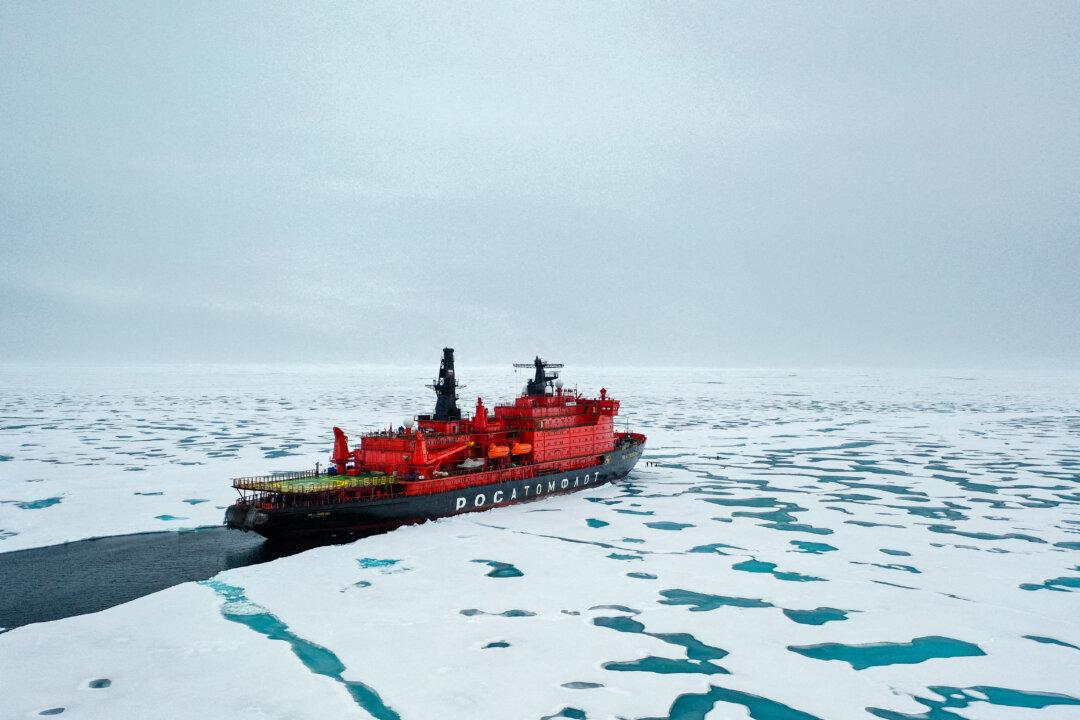Huge risk wind farm projects require a revamped subsidy system, according to a report by ex-Conservative MP Chris Skidmore’s net zero lobby group.
The report, authored by the former energy minister and RenewableUK Chief Executive Dan McGrail, called for alternative systems for large renewable energy projects. Mr. Skidmore stepped down earlier this year over legislation that allowed new oil and gas licences in the North Sea.
However, net zero policy critics, noting why the free market hasn’t developed mechanisms to mitigate offshore wind project risks, told The Epoch Times that the “appetite for subsidy is unlimited.”
Renewable energy developers compete for CfD contracts to sell electricity at a fixed price. This gives companies certainty even if wholesale electricity prices plummet, therefore facilitating project financing. This is funded through a levy on energy suppliers.
Offshore Wind
The government wants the UK to have 50 gigawatts of offshore wind capacity installed by 2030.The report said that the cost of developing a 100 megawatt onshore wind farm to qualify to enter a CfD auction is likely to be in the range of £5 million, with a 100 megawatt solar farm at £2 million. It added that developing an offshore wind farm of any size is likely to cost £200 million to £400 million.
It said that there is “currently a one size fits all approach for CfD.”
However, it added that “big infrastructure projects with huge risk might require another model.”
“These costs are accelerating, and recent evidence suggests that the constraints being felt in the supply chain are requiring developers to place greater and greater commitments to suppliers before CfD auctions, potentially up to £1 billion,” it said.
“These are risks which UK developers are taking for the right to enter an auction,” it said, adding that this “is clearly unsustainable and is a major risk factor for the attractiveness of the UK market.”
It added that many suppliers, especially of turbines and electrical equipment, are “simply unwilling to dedicate scarce manufacturing slots to a project that might win in a CfD auction.”
It called for “improved finance and tax provisions” as aspects of the current tax regime create “hurdles” for renewable energy development.
Last September, the auction, known in the industry as allocation round five (AR5) failed to attract a single new offshore wind farm.
‘Some of the Risk Should Remain With the Developer’
John Constable, director of the Renewable Energy Foundation, which is critical of wind farm expansion, told The Epoch Times that “risk cannot be dissolved, it can only transferred from one party to another.”“CfD subsidies to wind transfer some of the risk from the developer to the electricity consumer. But it is entirely fair that some of the risk should remain with the developer. Furthermore, if there were no risk in the development phase, developers would have no reason to focus their minds and choose better over worse projects,” he said.
He said that from about 2016 onwards the offshore wind industry was claiming highly significant cost reductions, and making very low bids for CfD contracts, however that has not materialised.
He said that asking for “much higher levels of income support through the CfD would be very embarrassing, so they are look at the development phase instead.”
“Perhaps they hope to obtain capital grants or tax credits towards the cost of development. This would be de-risking the development phase for them by transferring the risk onto taxpayers,” he said.
“The point is that with a fundamentally uneconomic energy industry such as wind, where the underlying physics is unfavourable (wind is close to random heat) the appetite for subsidy is unlimited,” he added.
The Epoch Times contacted Mission Zero Coalition for comment.







